Great Lakes Cicada Page | home
Introducing the Cicada | Life Cycle | 1999 Brood V Account | My Journeys | Magicicada Galleries | Magicicada Gallery 2 | Magicicada Nymphs | Chimneys & Emergence Holes | Magicicada Emergence | Magicicada Emergence 2 | Magicicadas Feeding | Magicicada Mating | Magicicada Ovipositing | Eggs & Egg Damage | Cicada Mortality | Brood Maps | Tibicen Galleries | Tibicen Gallery 2 | Tibicen Nymphs | Tibicen Emergence | Tibicen Emergence 2 | Tibicen Feeding & Ovipositing | Okanagana Galleries | Field Guide | How to Find | Deterrence | Armed Robbery??? | My Story | About Me | Cicada Links | The Future
Tibicen Emergence
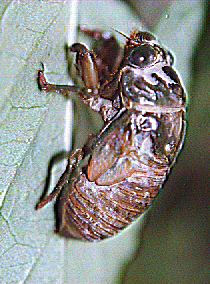
Tibicen Nymph
After exiting the ground beginning in late June through early September, the Tibicen nymph crawls and locates a firm support.
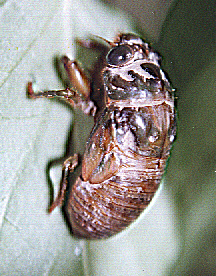
Once a suitable support is grasped, the nymph's skin slowly splits down its back.
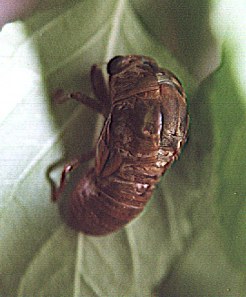
After numerous muscle contractions, the new adult begins to emerge through the opening.
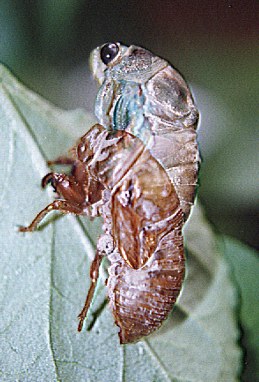
Like child birth, the head generally is the first to appear.

After more contractions, the cicada's body slowly emerges from its husk.
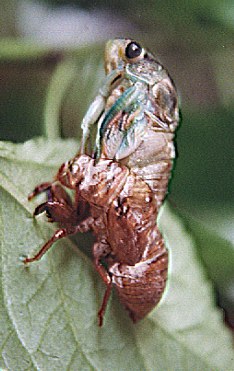
The wing flaps and legs become visible.
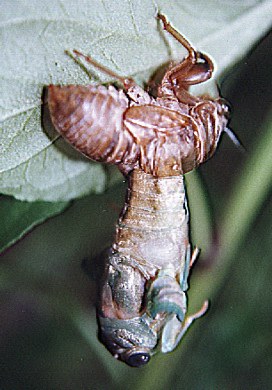
Once the body and legs are free, the cicada rests momentarily while hung by its abdomen.

It's a boy! The sound producing organs can be observed just behind the legs. Also notice the trachea cords that enabled the cicada to breath in its old husk.
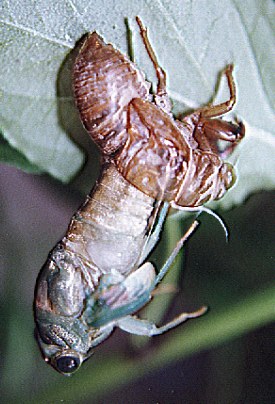
The cicada continues to dangle, now simply to stretch its legs.

The wing flaps begin to slowly unfold as the cicada begins to pump blood through its wing veins.
To see what happens next.... Refer to Tibicen emergence gallery 2!
Photos taken: Summer 1998 - Fremont, Sandusky County, Ohio